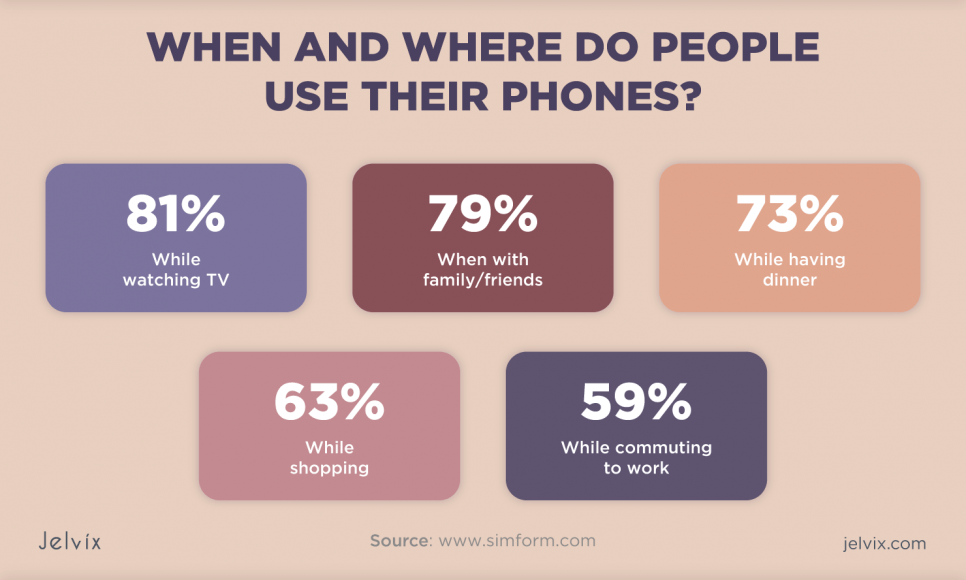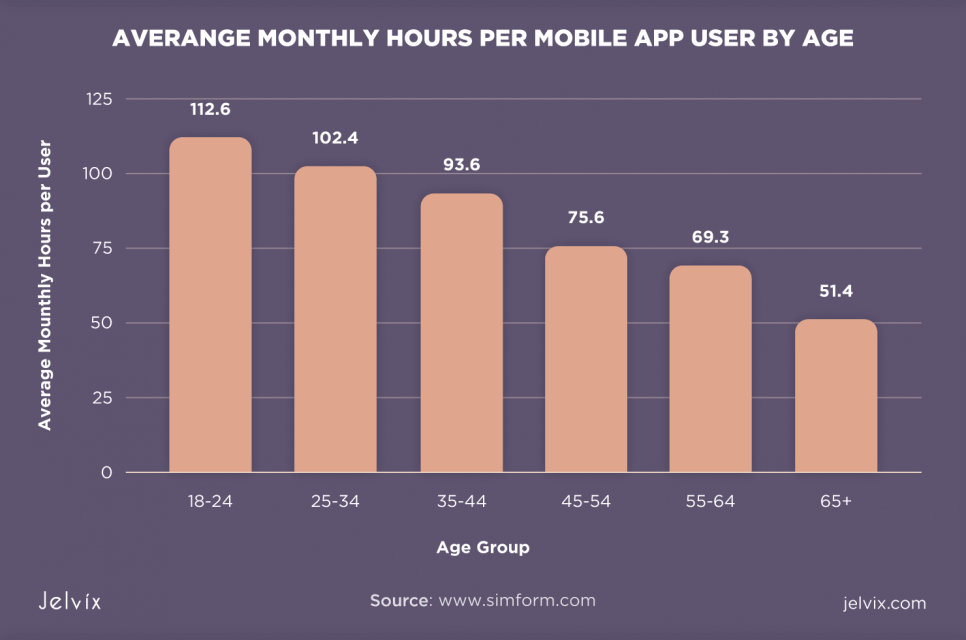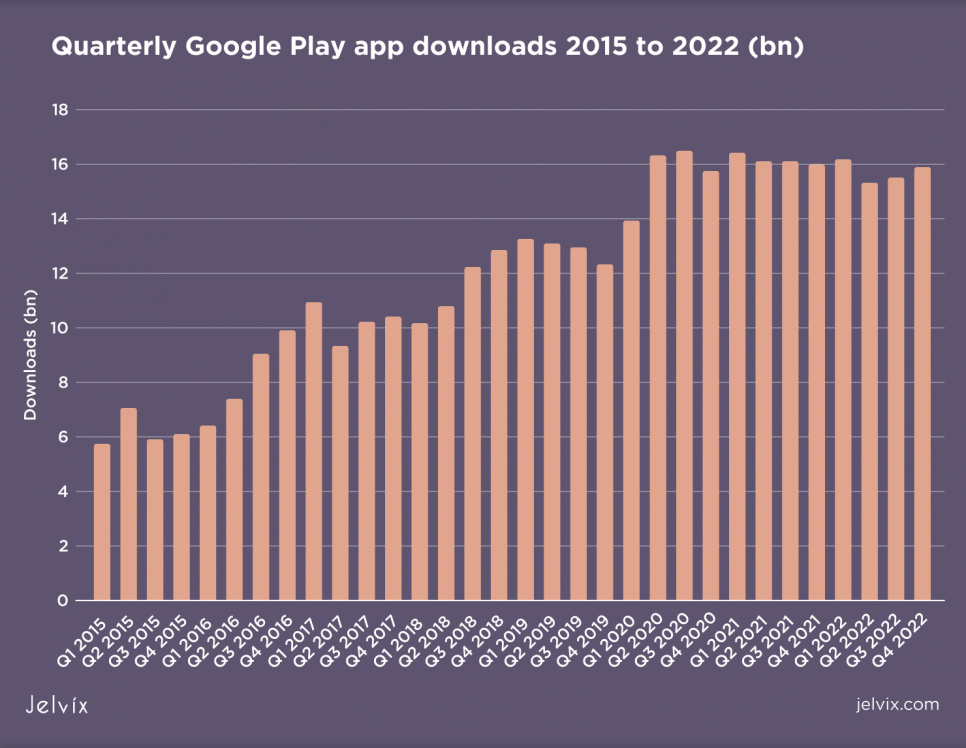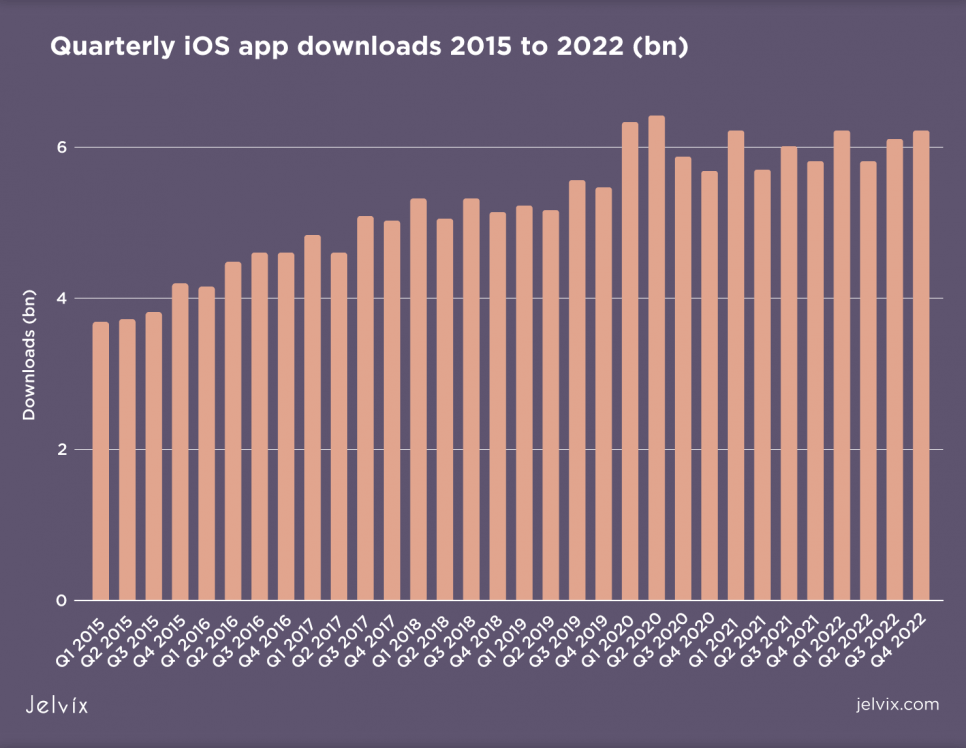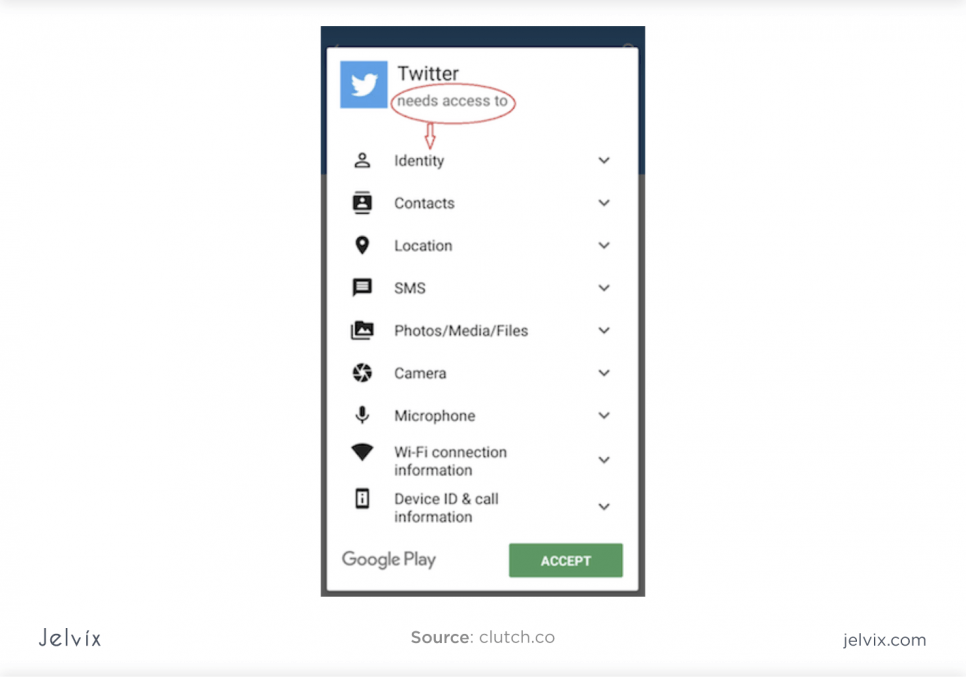The phrase, “There’s an app for that,” could not be more appropriate for 2023. Apps are playing an increasingly significant role in our lives – from retail-based e-commerce businesses to personal finance and life management, entertainment and gaming, and tracing contacts during the COVID-19 epidemic. In fact, as of 2021, there were 100 billion downloads from Google Play and iOS stores globally, and this number is expected to reach 200 billion in 2025. And in October 2022 alone, about 97 thousand apps were released on the Google Play Store and 36 thousand on Apple App Store.
Many of these were developed for one or both of the two major app stores via native app development, but many were also developed and launched via cross-platform technology, a method designed to reach a much larger audience on multiple platforms.
So, which should you choose for your development – native or cross-platform? In this article, you will receive a comprehensive explanation of both types of development and the pros and cons of each. In the end, you should be able to make an informed decision on which type of development is right for your apps so that you can locate the right developer or team for what you want.
First, an overview of the Mobile Development Market in the Current Environment
As of the 4th quarter, 2016, mobile devices surpassed the use of desktop PCs as the venue for consumers to communicate with others, obtain information, search for products or services, make purchases, and solve specific problems they face. And they use them everywhere and in all environments:
When users conduct a search related to what they need, they will immediately be rewarded with results that point them to specific websites or apps. And even those websites have apps, which they encourage visitors to download, to make access easy while “on the go.”
Let’s unpack more stats about the mobile apps market:
- Statista predicts that in 2023, the annual number of app downloads worldwide will reach 299 billion.
- Mobile commerce volume is expected to hit $620.97 billion by 2024. Nearly half (42.9%) of all e-commerce purchases will be made via mobile devices.
- During Q3 of 2022, 41,517 healthcare and medical apps were available on the Apple App Store.
- During Q3 of 2022, there were 3.55 million apps available for Android, making Google Play the app store with the biggest number of apps.
- Gaming apps are the most popular based and often rank as the most downloaded apps. The second and third most popular are apps for business and education.
It’s also important to look at the demographics of app use, especially among age groups. There are probably no surprises here.
The monthly use in hours is as follows:
It is also interesting to note that Google Play app downloads outnumber iOS downloads by quite a bit.
This information should help drive decisions as individuals and organizations consider what types of apps they are interested in developing in at least the nearest future and for whom these apps will be developed.
The other question, of course, is which development model is best to use – native or cross-platform. So here is an in-depth look at both technologies.
Native App Development
In short, a native app is developed specifically for a specific platform(s) or device type – usually Android or iOS. Programming languages vary, depending on Android or iOS. Customary languages for Android include Java or Kotlin with the Android Studio framework. For iOS development, the most common languages are Objective- or Swift, with Xcode as a framework.
In both instances, the development can take advantage of the features of the devices for which they are being programmed, including such things as cameras, GPS, etc., uploaded to the Apple app store or Google Play for consumer download.
When Native App Development Is Preferred
Native app development usually occurs when the individual ordering it has a good budget and is flexible enough on time-to-market or launch time frame. In general, it’s a good investment and results in a user-friendly app with all the detailed features the app’s owner wants.
It sounds as if native development is ideal; however, there are lots of advantages. Let’s have a look at the pros and cons.
Pros of Native Development
The advantages of native development are obvious to those who use it:
- Great Performance
For someone who wants efficiency, responsiveness, speed, and security, native app development delivers. This all is possible because native apps are built for a specific platform and with core programming languages and APIs. Loading time is fast and streamlined.
- Security
Native apps have multiple layers of an OS and are thus difficult to breach. Further, they do not rely on any third-party system; they use APIs that have been previously determined to be secure. And one of the reasons for native development taking longer is that security structures are to be designed and tested prior to launch.
- Fewer Bugs
A native app uses a single codebase, as opposed to cross-platform apps that must house two codebases. There are fewer chances for bugs because there is no reliance on cross-platform tools (e.g., Xamarin or Cordova).
As well, native app developers have access to the latest SDKs as they start their development. Such kits are bug-free, and because they give developers a faster lead time, more time can be spent on testing, finding any bugs, and fixing them.
- Maintenance
Apps that are here for the long-term need code that is easy and cheap to maintain. Apps written in native code are easier to update and maintain – there is just less coding and dependencies required. Adding new features is simply easier. And users can get information about any updates easily.
- Good Offline Performance
Native app content is downloaded onto a user’s device and is fully usable with all of that device’s features, including such things as its contact list, GPS, camera, and more.
And because native apps reside in their respective stores, users will be notified when updates are available and can download them easily.
Cons of Native App Development
While everything seems to be lovely in the choice for native app development, it is not without its disadvantages. Here are the most common cons:
- Cost
Most individuals or organizations who want apps want them to be developed for both Apple Store and Google Play. This obviously requires two totally separate development tasks, adding to the cost.
Other than the development of two separate apps, native apps involve complexity and customization that cross-platform development does not. And with this complexity comes higher cost.
- Time
Native app development is a lengthy process. Anyone who is in a hurry for their app to be launched and marketed will not want native development.
- Cost of Maintenance
Maintenance costs can run 15 – 20% of the original development cost. Such costs will include content upgrades, adding new features (including graphics), modifications in code, and the integration of newer technologies (e.g., security). It will also include increases in recurring expenses, such as payment gateways.
- Frequent Upgrades Required
Any time a bug is fixed or an upgrade is launched, developers will first have to submit those to the respective store, and then users will have to be notified, usually by the store. There is always a chance that users will not notice the update notification. The app will then develop glitches that can cause loss of customers.
Tools and Languages for Native App Development
Most commonly, developers will use these tools in the building process:
For iOS: AppCode, Xcode, Atom
For Android: IntelliJ IDEA, Android IDE, Android Studio
Programming languages common to native app development are as follows:
For iOS: There are two primary options – Objective-C, and Swift.
For Android: Again, two primary options are available. – Java and Kotlin
If you need to choose between a native app or Progressive Web App, you should read this article.
Cross-Platform Development
Cross-platform apps are those that are developed to operate on multiple mobile platforms. They are thus compatible with both Android and iOS operating systems, as well as less-used platforms. Developers of cross-platform apps use only one code system, and thus the app is released faster to reach a larger audience.
When Cross-Platform Development Is Preferred
Individuals and organizations that want their apps on multiple platforms at low cost and plan to launch as quickly as possible will no doubt like cross-platform app development. While not possessing the quality that native app development produces, cross-platform apps do serve a valuable purpose for many.
Pros of Cross-Platform Apps
- Cost
This is the primary benefit of cross-platform development. When there are budget constraints, the ability to craft a single code for multiple platforms will obviously lead to shortened development time and consequently cost less. In short, the developer writes the code only once and runs the app on both iOS and Android devices. There is no need to hire more than one developer or development team unless you see any exceptional sense in this.
- Fast
Because developers can use up to 80% of the original code for multiple platforms, huge time savings are in place. There is no need to write code from scratch for each platform, as in the case with native apps. Highly functional apps can thus be developed much faster. This is especially valuable when one needs a prototype or MVP that can “test the waters” for the viability of a customer base. As well, such apps can be sent to influencers for their reviews. This is also a great option for a startup.
- Support and Maintenance Are Simpler
Apps must be regularly updated to remain competitive in their respective marketplaces. Again, because there is a single developer or a team that is using a single codebase, updates can be rolled out quickly, adding new features as desired or needed.
- Faster Launch to Market
Again, because of faster development, an app owner can get his product launched and perhaps establish a customer base before someone else with a similar idea launches his. Getting into the app stores with a compelling and engaging description and in the right category(-ies) can begin to bring in customers, especially if the basic app is offered for free and monetized through advertisers.
- Larger Exposure
If a native app is developed for Android, it goes onto Google Play and nowhere else. A cross-platform app can go into both major stores, as well as Windows, and macOS, providing exposure to a much larger audience, and all at that low cost.
Cons of Cross-Platform Development
While cross-platform is attractive to those with limited budgets and a desire to launch quickly (as it often is in the case with start-ups), there are obvious drawbacks.
- Functionality Is Limited
There are some limits here – lack of full features of operating systems and API, for example.This impacts user experience.
- Poor Adaptability With 3rd Party Libraries
This means that developers cannot use many libraries or software development kits that make coding easier. They have to spend a lot of time getting functionality integrated into a cross-platform app.
- Issues With Integration
Integrating cross-platform apps with local settings, notifications, and preferences can be a challenge. Further, the need for variety in storage options may require a cloud service.
- Slower Speed Is Entirely Possible
Too many cross-compliances can lead to slower speeds than with native apps.
Tools, Technologies, and Programming Languages
JavaScript and C# are common programming languages for cross-platform app development, though Cordova, Ionic, and NativeScript are also used.
As for tools and technologies, there are some newer ones serving to improve some of the negative aspects of cross-platform:
- React Native came from Facebook in 2015 and is now a popular tool. It makes development faster, but perhaps its best advantage is that it does provide native-like functionality that improves user experience.
- Xamarin is an older framework now owned by Microsoft. Its great advantage is that it is open-source, using C# coding to work on any platform.
- Flutter is the newest tool of these three. It, too, is open-source and allows building cross-platform apps that act and feel like native apps on both iOS and Android platforms. This has brought much greater functionality to cross-platform apps.
The following graph shows a comparison of the usage of cross-platform frameworks:
How Do You Make the Right Choice for Your Needs?
The first step in making this decision is to be certain that you understand the difference between native and cross-platform. Reading the above content should have helped. Now you must look at the three most important considerations – what you want your app to do, your timelines for completion and launch, and your budget parameters.
To help you get a clearer idea of which app development you want, here is a brief listing of the elements that should determine your choice.
When To Choose Native App Development
- you need exceptional functionality and streamlined responsiveness;
- you have no budget issues;
- you want an app that can operate without connectivity;
- you want to focus on specific audiences and potential customer bases, such as Android and/or iOS;
- you want to install frequent updates, usually based upon what you determine users want.
When To Choose Cross-Platform App Development
- you want to focus on a large audience in multiple markets;
- you want an app that can be built quickly and in a cost-effective way;
- your app doesn’t need complicated animation, 3D graphics, or other functionalities or features;
- you need a prototype or MVP to “test” the market
- your app is focused more on imparting content, information, and/or simpler user tasks. Examples might be a calendar or a personal budgeting app.
Studying the checklists above should almost make the decision for you.
According to App Development Trends 2025, individuals, start-ups, and small businesses are unlikely to maintain in-house teams for app development and maintenance. As a result, outsourcing will remain a practical solution. To keep costs down—especially when targeting multiple platforms—cross-platform development continues to be the most efficient and popular choice.
Large enterprises will have the in-house development staff and the luxury of choosing native or cross-platform. For them, it is a question of how rapidly they want that development to occur and its purpose.
Conclusion
Every individual or organization looking for the right app development has two choices – a native app for each platform or a cross-platform app that will serve multiple purposes. Hopefully, this article has provided the information and the details you need to make an informed decision about the type of app development you want to pursue, the pros and cons that you need to be prepared for, and the steps for finding the right developer.
Think about it this way: If you were a patient considering an important surgery or medical procedure, you would probably want a second, perhaps a third, opinion. You know the purpose of the procedure and the outcome you want, but you need the advice of specialists. In-app development, you know the purpose and the outcome you want, but you are not a specialist. Consult with those who are before making your choice.
Jessica Fender is a copywriter and blogger at GetGoodGrade with a background in marketing and sales. She enjoys sharing her experience with like-minded professionals who aim to provide customers with high-quality services.
Need a qualified team of developers?
Scale your development capacity with top-level expertise and resources.

